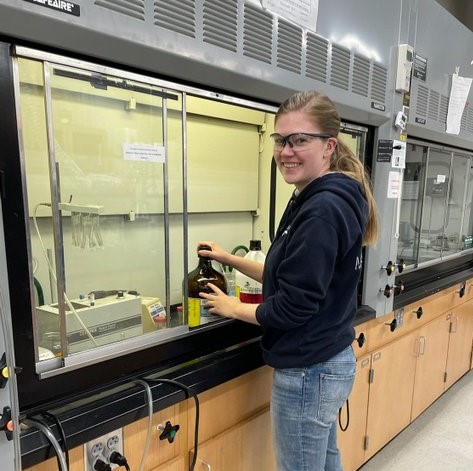Ocean acidification

Climate change is real and is being caused by humans pumping carbon dioxide (along with other compounds) into the atmosphere. Hopefully that statement does not come as a shock to you. What you might be less familiar with is the concept of ocean acidification. As humans add carbon dioxide (CO2) into the atmosphere, the ocean absorbs some of that CO2. As it does, the pH of the ocean decreases and becomes more acidic. This is bad for marine life, just like how drinking soda, which has a low pH, is bad for your teeth.

Getting the ocean back on track
So how can we stop or slow ocean acidification? Well, we could stop polluting, but that is unlikely to happen any time soon. Scientists around the world have been working on ocean-based CO2 removal techniques such as fertilizing the ocean with iron or creating clouds. A team of scientist from the University of Miami has another idea. What if there was something that we could just add to the ocean to make it more basic so it can absorb more CO2? The team set out to see if brucite made of magnesium hydroxide, Mg(OH)2, could be the answer.
Carbon dioxide removal
Scientists took seawater from Biscayne Bay near Miami, Florida and recreated wind and waves in a tank. They then added brucite and studied how the water changed over a month. The addition of the brucite increased the pH (counteracting acidification) and made the water more resistant to additional changes in pH. The brucite additions were more effective with lower temperatures and more CO2. Therefore, brucite would be the most effective at higher latitudes (near the poles).
Could it actually work?
Brucite is already being used for wastewater and powerplant water treatment. However, the effects of brucite on marine life is still unknown. If brucite was applied to the entire ocean it could remove more than three times the amount of CO2 than it does currently, up to 44.4 x 109 tons of CO2 per year (the weight of 15,000 blue whales). Adding brucite to the entire ocean isn’t possible or sustainable, but it could be a small part in the bigger picture of addressing climate change. While more work needs to be done to better understand the role brucite could play in climate change mitigation, science is progressing every day towards more solutions for climate change. In the meantime: reduce, reuse, recycle, and decrease your carbon footprint in any way you can.
Header image: a shell getting thinner and thinner with ocean acification

While I have never lived close to the ocean, it has always had a special place in my heart. I recently earned my PhD in environmental chemistry from the State University of New York College of Environmental Science and Forestry (SUNY ESF) studying reef and coastal biogeochemistry. I focus on the lipid and trace metal composition of settling particles and surface sediment in coastal systems, primarily studying coral reefs. Currently, I am a Visiting Assistant Professor at Trinity College. When not diving or in the lab you can find me hiking with my dogs, reading, cross stitching, or just enjoying a good cup of tea!


